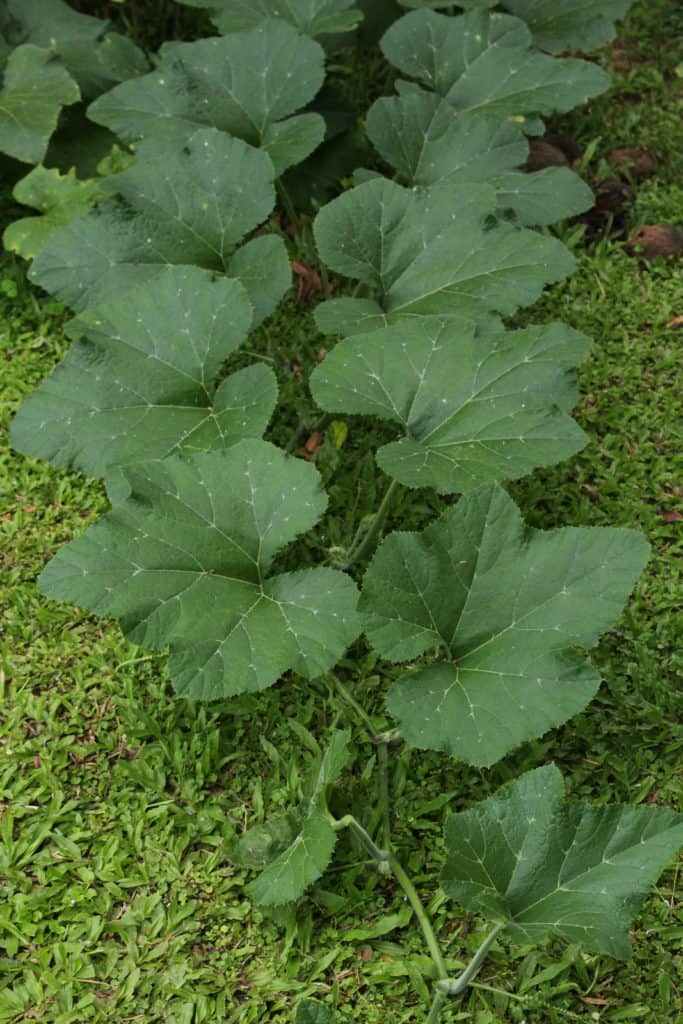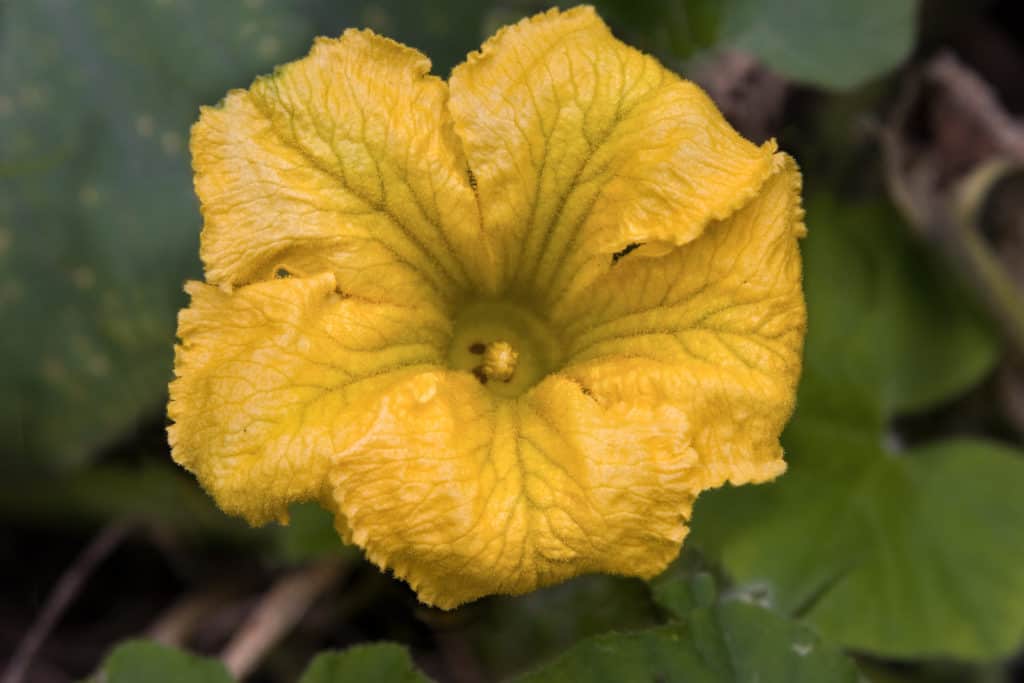***
It’s hard to imagine with temperatures in the triple digits, but fall is around the corner! Soon, Halloween will be on our doorstep and it will be time to think about pumpkins.
Here in Texas, the scorching July and August days prevent flowers and fruit from taking hold in time for pumpkin patch season. So we bring our pumpkins in from a small family farm in Michigan, where temperatures are much cooler.
It takes up to 120 days to produce mature carving pumpkins. So our Michigan pumpkin farmers, start planting in early-to-mid June. If they plant too early, the fruit will rot before pumpkin season.
So what have our northern pumpkin vines been up to for the past couple months?
Start from Seed
Like nearly all fruits and vegetables, the life of a pumpkin begins as a seed. While pumpkin seeds are bigger than most other seeds, you’d never guess that they could lead to such massive gourds!
With such long vines and big fruit, pumpkin plants need plenty of space. So we suggest planting each seed 4 feet apart.
The plants also need full sun and well-draining soil. Planting the seeds in mounds can help prevent water from pooling around their roots, which they don’t like. Pumpkins need slow, deep waterings to keep the soil moist, but not sopping.
Go Green

Before we see any orange, we’re going to see lots of green. Those little pumpkin seeds have to set the stage for the fruits by growing big vines and leaves. At the first sign of green sprouts, add a bit of nitrogen-rich fertilizer to give them a boost and encourage leaf growth.
The big leaves on a pumpkin plant are a vital part of the pumpkin’s life cycle. In addition to soaking up plenty of rays to make the chlorophyll that feeds the plant, they also provide crucial shade to keep the baby pumpkins from scorching and losing their color.
When watering your pumpkin vines, make sure to water them at the base. If the leaves stay wet, they become more prone to powdery mildew which can kill the plant. In a big pumpkin patch like ours, we have to be extra vigilant. Powdery mildew can spread and take out an entire field!
Fall Flowers
Did you know that pumpkin plants grow big yellow flowers before they make the pumpkin? The flowers are an important part of the pumpkin life cycle, because they’re responsible for pollination.
Some flowers are male, and some are female. Male flowers usually bud first, and female flowers arrive about a week later. You can easily tell the female flowers from the male — female flowers will have a swollen round lump below the petals. It looks like a mini pumpkin, because that’s what it is!

Bees will usually take care of pollination for you. But if there aren’t any bees in the garden, the flowers can be hand-pollinated. Use a clean paintbrush or cotton ball to gather pollen from a male flower and gently dab it in the center of the female flower.
After pollination, the flowers will wilt and die away. But that little nub that was under the female flower will begin to grow…
Time for Fruit
…and grow…and grow!
Monitor how many pumpkins are growing on each vine. Once a vine has a few pumpkins started, it may be a good idea to prune it to keep the vine from trying to grow too many fruits at once.
As the pumpkins start to mature, you can cut back on watering. Once the fruit is bright orange and the vines look like they’re drying out, it’s time to harvest.

Make sure the fruit is firm to the touch before you cut it! If they’re still soft, they’ll rot within just a few days. To harvest, cut the stem a few inches above the fruit.
If you’re feeling competitive, you can weigh your pumpkin to see how you measure up against the world-record holder for the largest pumpkin — it was over 3,000 pounds!
Assuming your pumpkin doesn’t smash that record, it’s now time to carve it into a Halloween-worthy jack-o-lantern. But when you scoop out the innards, make sure to save some seeds to plant next year!
And Back to Seeds
After you’ve emptied out your pumpkin for carving, rinse the pulp off the seeds. Save the biggest seeds, which will have the best chance of germinating.
Once they’re clean, lay them out on a paper towel in a cool spot for about a week. When they’re completely dry, store them in an envelope over the winter until it’s time to plant again.
So now that you know the life cycle of the pumpkin, you can start your own little backyard pumpkin patch. But beware those late summer temps!
Or if it sounds like a bit too much work, just come out to Barton Hill Farms’ Fall Festival and Pumpkin Patch and choose one of ours!

